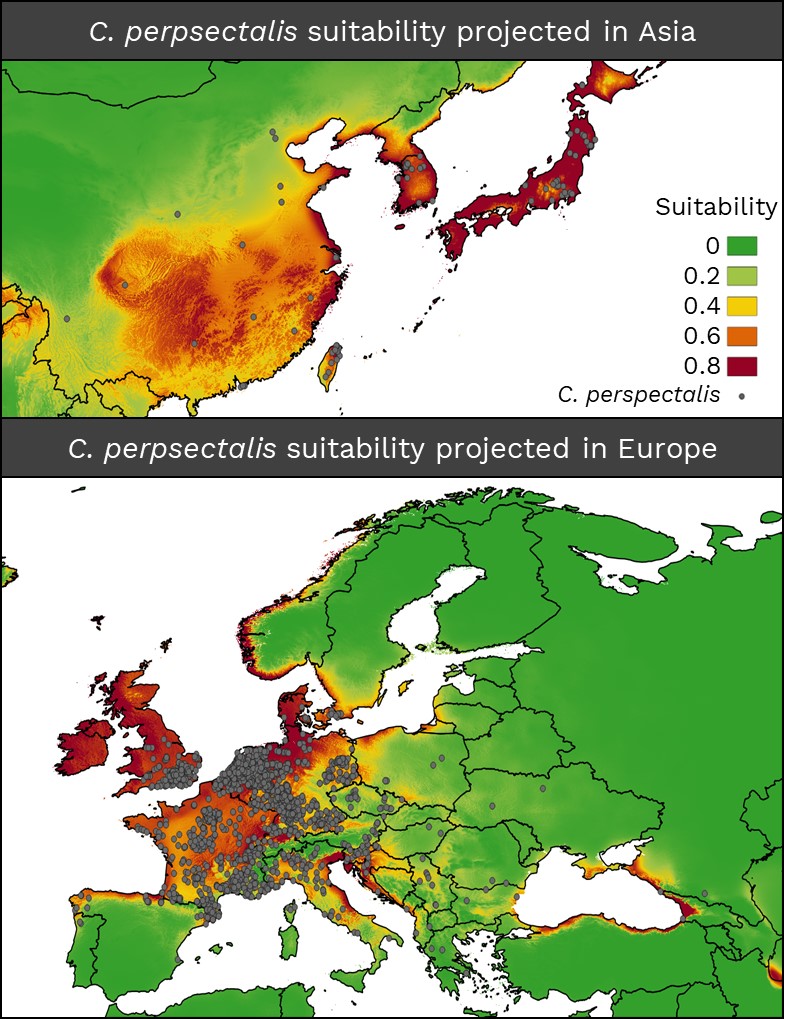Predicting the potential distribution and forest impact of the invasive species Cydalima perspectalis in Europe

The box tree moth is an invasive species that impacts forests in Europe. What is its dynamic? What defines its impact pattern? What are the main factors determining its ecological niche? In this new publication in Ecology and Evolution we answer all these questions.
Invasive species have considerably increased in recent decades due to direct and indirect effects of ever-increasing international trade rates and new climate conditions derived from global change. We need to better understand how the dynamics of early species invasions develop and how these result in impacts on the invaded ecosystems. In this publication we present the study of the distribution and severe defoliation processes of the box tree moth (Cydalima perspectalis W.), a tree defoliator insect native to Asia and invasive in Europe since 2007, through the combination of species distribution models based on climate and landscape composition information. The results showed that the combination of data from the native and the invaded areas was the most effective methodology for the appropriate invasive species modeling. The species was not influenced by overall landscape factors, but only by the presence of its host plant, dispersal capacity and climate suitability. Such climate suitability was described by low precipitation seasonality and minimum annual temperatures around 0ºC, defining a continentality effect throughout the territory. We emphasize the need of studying distribution and severe defoliation processes separately because we identified that climate suitability was slightly involved in limiting species spread processes but strongly constrained ecosystem impact in terms of defoliation before the species reaches equilibrium with the new environment. New studies on habitat recovery after disturbance, ecological consequences of such impact and community dynamics in a context of climate change are required for a better understanding of this invasive species.




